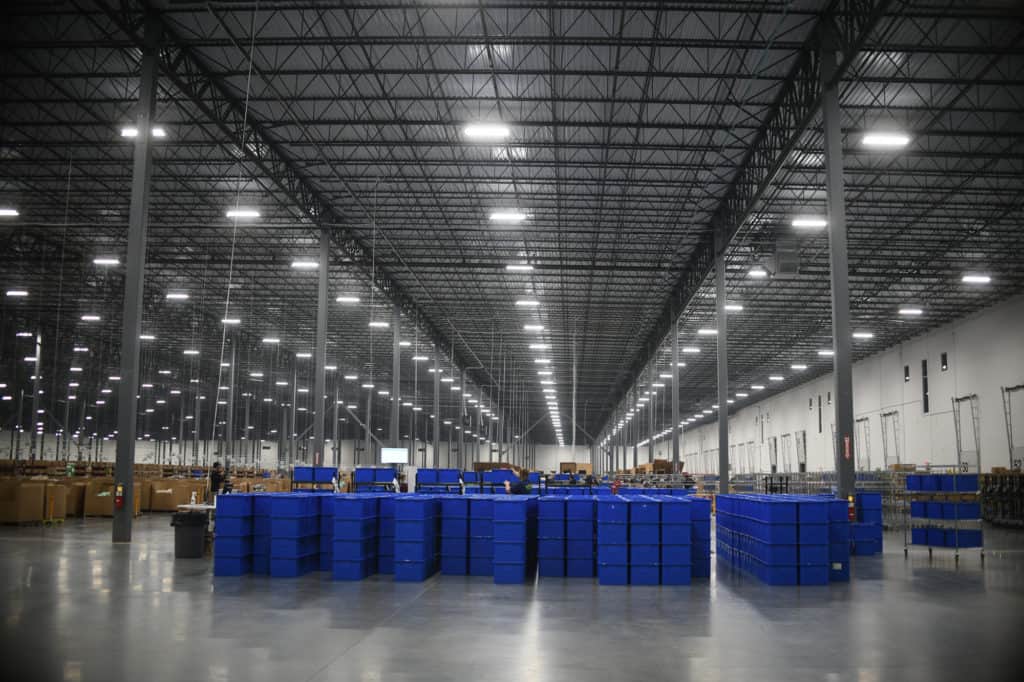Your business can be turning profits left and right, but that doesn’t mean that your warehouse is as efficient as it should be. Now, it’s one thing to be running an inefficient warehouse, but running an inefficient warehouse and not knowing that you’re doing so is a completely different animal altogether. Under the best circumstances, doing so will ensure a rude awakening once your business strategy, supply chain or demand experiences a natural shift. 
From making use of old-fashioned, diligent auditing to investing in the latest and greatest in data-tracking tools, now’s the time to begin holding the reigns when it comes to monitoring your warehouse efficiency. So, wondering how to measure efficiency? Here are some of the simplest, yet most effective ways you can get started:
- Complete regular and extensive operational audits
- Define your warehouse goals
- Establish KPIs for your warehouse workers
- Chart your fulfillment performance
As you can see, the key elements of efficiency measurement lie in a warehouse manager’s ability to look at a variety of indicators to see how they function together best. Here’s what you need to know to put these strategies to use and how to measure warehouse efficiency.
1. Complete regular and extensive operational audits
How else can you be certain of where your business stands in terms of inventory, safety, or efficiency if you don’t conduct regular in-house audits? To rev up your audit so that it places the most focus on efficiency, pay the most attention to these components:
- Your warehouse’s capacity and throughput — Don’t forget to differentiate between the current data and the optimum data that you would like to build towards.
- Your warehouse’s layout and flow — Make note of any trouble areas that might be holding up your machines or workers in regards to the warehouse layout and inventory flow systems.
- Your storage systems — Are any of your storage systems difficult or dangerous to access?
- Your customer service performance metrics — Safeguard your happy customer base while still ensuring that your business is seeing the return that it needs.
- Your systems are performing to the best of their abilities — Watch out for any glitches in your systems that may be causing major slowdowns; schedule maintenance and checkups with IT for broader analysis.
- Your safety and security systems are functioning at 100% — Nothing can cause a bigger hiccup for a warehouse than being forced to endure operation-halting breaches in security or safety.
Once your internal audit is complete, compile easy-to-access registers for managers to update as changes occur.
2. Define your warehouse performance goals
Now that your operational audit is complete, schedule meetings with the appropriate department heads and discuss your goals for warehouse efficiency moving forward. Once you and your colleagues are clear on what these numbers might be — including your proposed timeline — you can now make official updates to your warehouse systems.
In this update, make the necessary organizational, staffing and inventory tracking changes to ensure that every functioning component in your warehouse has efficiency in mind. From there, establish registers that promote visibility among all departments so that others, both in-house and throughout your supply chain, are privy to any shifts as they happen in real-time.
3. Establish KPIs for your warehouse workers
You’ve likely already set some crude warehouse KPIs (key performance indicators) for your warehouse workers, but now that you have your new operational audit inventory counts and fulfillment data handy, it’s time for you to make the necessary adjustments. 
Instead of focusing on just a few areas, challenge yourself by establishing specific KPIs that are custom-fit for each worker or job title. Here are the main areas that should be included in yours:
- For packers — Volume received per hour, cycle time for each receipt (including accuracy percentage) and cost of receiving for each line.
- For pickers — Number of order lines picked per hour, order pick cycle times, quality metrics and cost of picking for each order line.
- For shippers — Order process per hour, cycle time per order, quality percentage per order and cost of shipping for each order.
Once you have used your valuable audit data to compile these updated KPIs, keep your workers in the loop on the changes — and be sure to provide extra efficiency training if the shifts in expectations are significant.
4. Chart your fulfillment performance
Now that you have updated your warehouse workers’ KPIs to reflect your efficiency goals, it’s time to take a holistic look at your fulfillment performance. Naturally, many factors come into play here — and you’ve already put several into effect if you’ve been following this list so far — but the most disruptive can also be the least obvious.
Take a look at your entire supply chain and use your current data-tracking software to analyze some of the spots that might be slowing down your order fulfillment speeds the most. Once you have zeroed-in on these, report the metrics to your workers and set up overarching productivity measurements (not just KPIs) that give each and every department an idea of your big-picture goals.
When it comes down to it, warehouse efficiency is less about promoting speed and more about looking at the hard data; you will always be able to quickly and confidently define the most sluggish points when you carefully chart these warehouse metrics.


